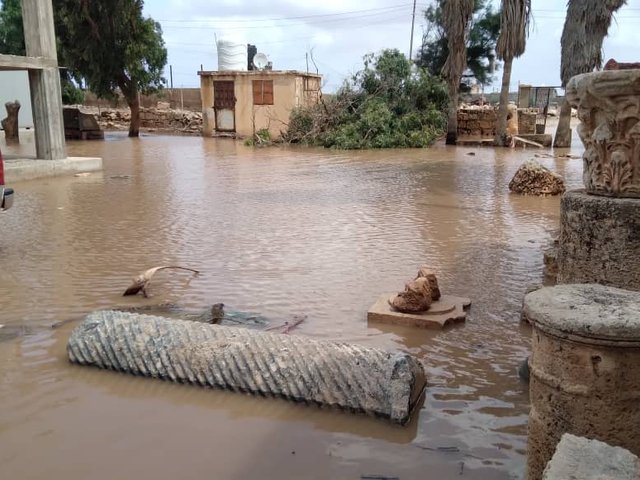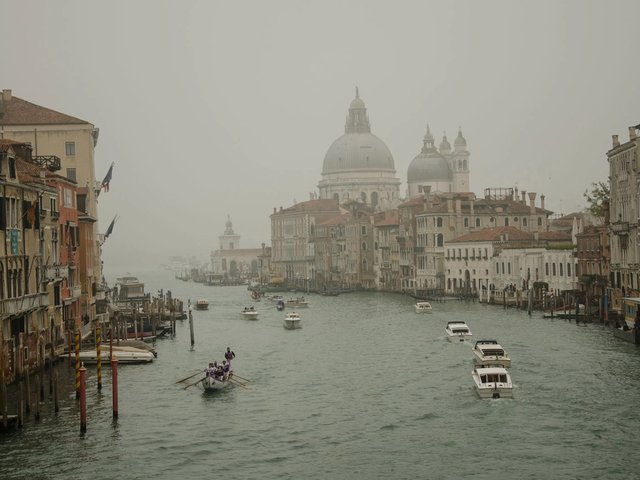Researchers are assessing the impact of climate change on cultural heritage as part of a sweeping EU initiative. During the three-year Triquetra Project, they will devise strategies to protect sites ranging from prehistoric dwellings in Germany to an underwater ancient city in Greece. Following the project, other heritage experts could be provided with tailor-made solutions for protecting their own sites.
Climate change is threatening cultural heritage like never before. Increasingly frequent sandstorms are burying painstakingly excavated Babylonian treasures in Iraq, while archaeological sites near Mediterranean coastlines are being eroded by raging storms. In July Greenpeace warned that heavy rain and fluctuating humidity are imperilling ancient Buddhist murals in the Mogao Caves, a Unesco World Heritage Site located in China’s Gansu province.
Underwater heritage is especially threatened by shifts in water currents and changes in the chemical composition of oceans, Edouard Planche, an underwater heritage expert at Unesco, tells The Art Newspaper. Due to rising sea levels, he adds, more archaeological sites are likely to follow the ancient Roman city of Baia near Naples, which was swallowed up by the Mediterranean Sea between the seventh and eighth centuries after it descended when underground magma cavities emptied. The site can now be visited by scuba divers.
“The effects of climate change are already evident around the world, with mega-fires, large floods and intense temperature changes,” says Charalampos Ioannidis, the director of the Triquetra Project. “It was very important to launch the project now.”
Triquetra, which was awarded almost €4m through the EU’s Horizon Europe programme, went live in January and runs to the end of 2025. It includes 21 partners in seven countries—Austria, Cyprus, Germany, Greece, Italy, Poland and Switzerland—among them universities and culture ministries. Researchers are monitoring eight pilot sites in underwater, coastal and mainland areas, including a Roman villa built by Emperor Augustus, the 12th century BC underwater city of Ancient Epidaurus in Greece, and the underwater remains of prehistoric stilt houses in Lake Starnberg in Germany.
Three-stage process
No previous project for monitoring cultural heritage has covered such a broad range of geographical contexts, says Salvatore Martino, a geologist at Rome’s Sapienza University who is working on a pilot site in Ventotene in Italy. However, the various sites are linked by a common thread. “There is a fil rouge, as each site is heavily affected by water in its various forms,” Martino says.
Named after the triangular motif of knotted arcs that often decorates medieval architecture, the project is underpinned by a three-stage methodology. Researchers first identify specific threats from climate change to heritage, before quantifying the severity of those threats and, finally, proposing mitigation measures.
To do so, they are harnessing a range of state-of-the-art technologies, including satellites in space, hydrological surveys, multispectral sensors, multibeam sonars and laser spectroscopy. “We have experimented with new combinations of technologies,” Martino says. “Some of the single sensors are not innovative in themselves; their combination with other technologies, on the other hand, certainly is.”
Researchers will be guided by a specially created decision support system (DSS), a digital platform helping devise tailor-made mitigation measures for each site. Meanwhile, they will log information about their sites and research in a database, where they can be freely consulted by other cultural heritage experts. The DSS will also be freely accessible, and its reach could eventually be extended to other heritage sites.
A number of other international projects are monitoring the effects of climate change on cultural heritage, with the EU, which is the world’s third largest emitter of greenhouse gases after China and the US, funding nine such projects for a total of €32m last year. “By collaborating, EU member states can pool their resources and share knowledge and expertise, becoming leaders in the fight against climate change,” says Johannes Barhke, the EU’s coordinating spokesman on research and innovation.
Countries are increasingly seeking collective solutions for protecting cultural heritage. Last summer, seven countries—Algeria, Croatia, Egypt, France, Italy, Morocco and Spain—joined forces with Tunisia to study underwater heritage in the Skerki Bank, an area on the Tunisian continental shelf where hundreds of ships have been wrecked in the past 3,000 years. It was the largest and most ambitious international mission concerning underwater cultural heritage ever conducted under the aegis of Unesco.
Navigating political differences in the Tunisia project was sometimes difficult, Unesco’s Edouard Planche admits. However, the country benefited from Italy, Croatia and Egypt’s experience in underwater archaeology, he says, while France provided underwater robots for mapping underwater heritage with no diving required.
The Triquetra project also brings together a number of countries that are not obvious political bedfellows. For example, Poland’s nationalist Law and Justice party, which is expected to win a national election on 15 October, has clashed with the EU in recent months over its migration policies, while the EU has criticised Poland for its supposed erosion of rule of law.
However, Bahrke says that the project could bring participating countries together politically. “When countries work together to solve problems, such as climate change, they learn to overcome challenges together, reducing barriers and building trust,” he says. “This makes them more likely to work together on other issues.”
Eight european heritage sites under threat from climate change

Courtesy Triquetra Project
Kalopodi, Greece
The city of Abae, in the ancient Greek state of Phocis, was known for its oracle of Apollo that even invading Persians consulted. Since archaeologists began unearthing two temple complexes in the 1970s, winter storms and frost have battered the buildings’ vulnerable structures.

Courtesy Triquetra Project
Ventotene, Italy
Rulers from Roman emperors to Mussolini exiled political opponents to the remote island of Ventotene in the Tyrrhenian Sea. Now, researchers are monitoring the effects of storms and climate variations on what remains of Villa Giulia, a sumptuous residence built by Augustus in the first century AD.

Courtesy Triquetra Project
Aegina Island, Greece
The island of Aegina in the Saronic Gulf was a major trading hub during the Aegean Bronze Age. During an excavation of a prehistoric settlement that began at the end of the 19th century, an archaeological site on the island was eroded by storms, and by crashing waves exacerbated by shipping traffic.

Courtesy Triquetra Project
Choirokoitia, Cyprus
A Unesco World Heritage site, Choirokoitia is one of the best-preserved Neolithic sites in the Mediterranean. However, the ancient town in the valley of the Agios Minas River, about 6km from the coast, is at risk of landslides, earthquakes and erosion.

Courtesy Triquetra Project. Photo: © ISCR
Epidaurus, Greece
Once a small 12th century BC city, the Sunken City of Ancient Epidaurus on the Argolid Peninsula is now one of the world’s most spectacular underwater archaeology sites. However, it is slowly being eroded by rising sea levels and the proliferation of damaging water micro-organisms.

Courtesy Triquetra Project
Roseninsel, Germany
This is one of 111 Unesco-listed sites around the Alps with remains of prehistoric stilt house settlements. Measuring posts have been planted in the lake to assess erosion levels and researchers are now assessing the impact of waves, snow and ice and biological and chemical hazards.

Courtesy Triquetra Project
Les Argilliez, Switzerland
Pile dwellings in two prehistoric villages at Les Argilliez are fully submerged in a lake at a depth of 2m-3m and covered by a layer of pebbles. However, reduced precipitation has caused water levels to fall, exposing the piles. Populations of mussels are also damaging the archaeology.

Courtesy Triquetra Project
Smuszewo, Poland
A Bronze Age settlement is located at the bottom of a post-glacial valley that is now filled with two lakes. Fluctuating water levels, due both to reduced amounts of rainfall and farmers’ attempts to irrigate surrounding land, are damaging wooden structures on the site.





